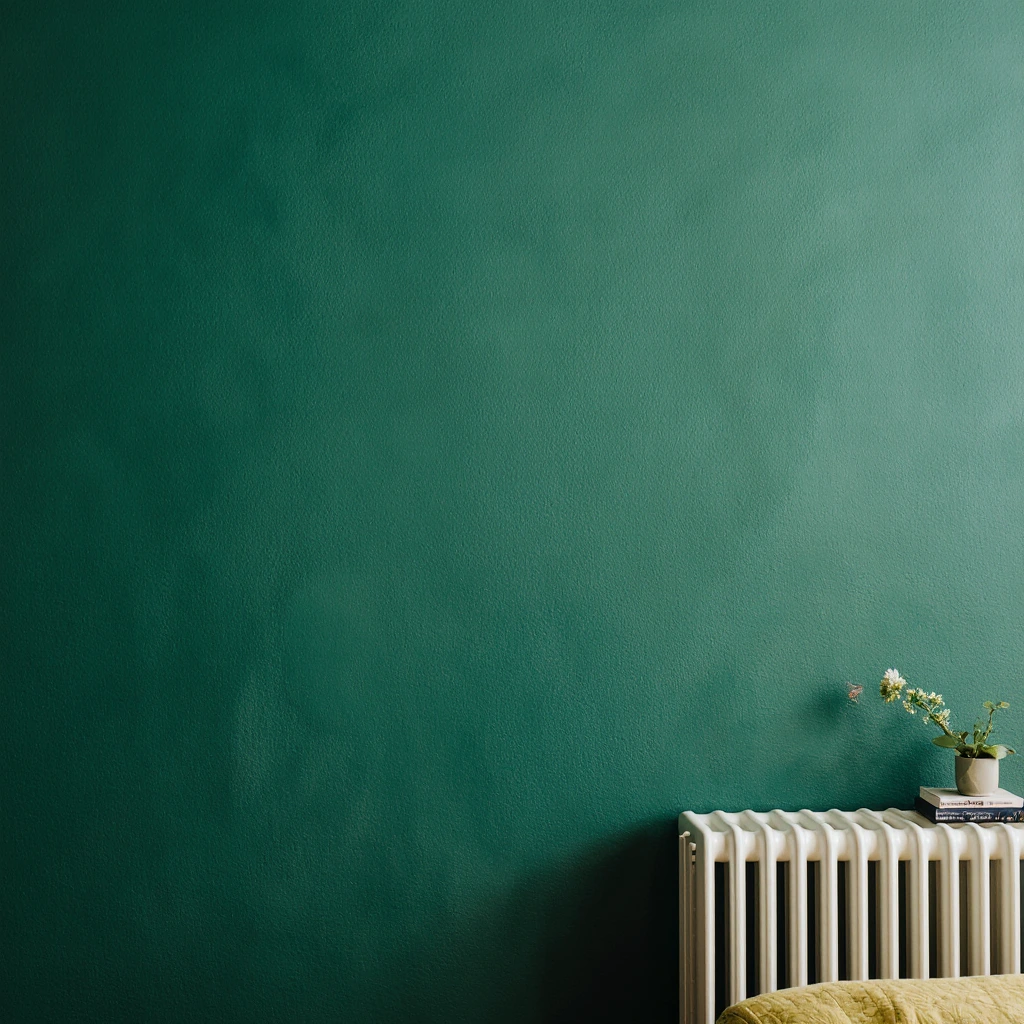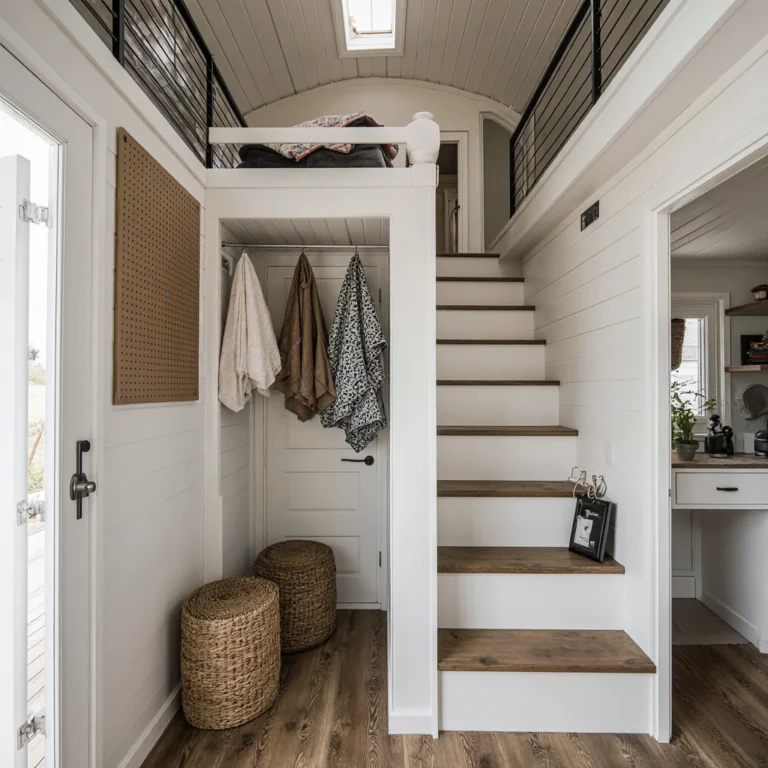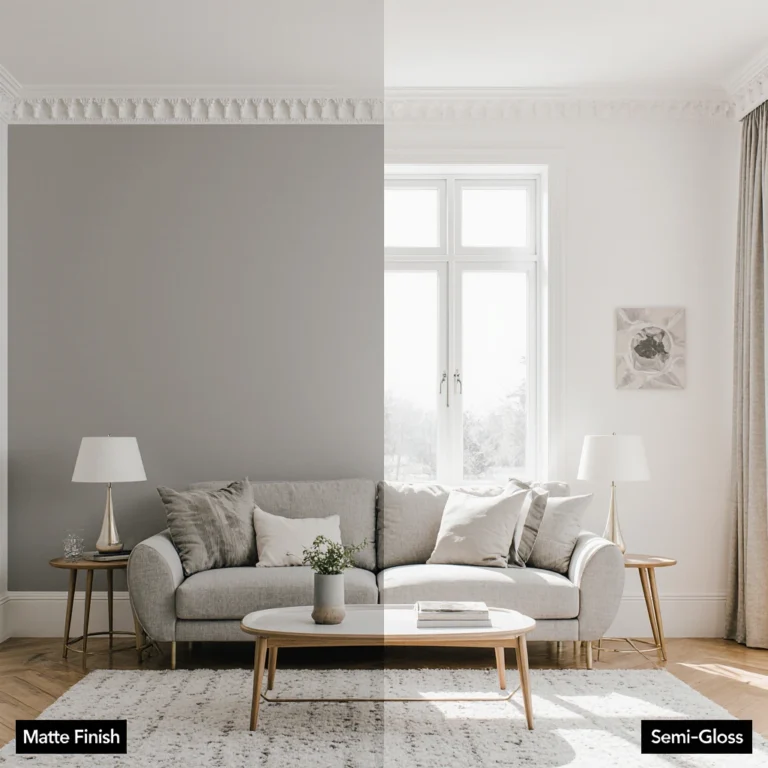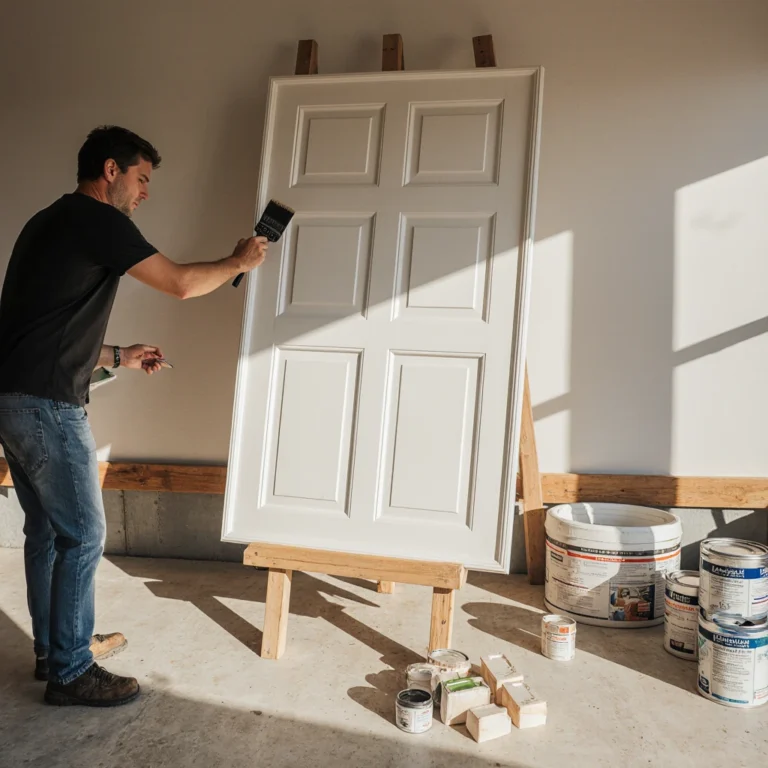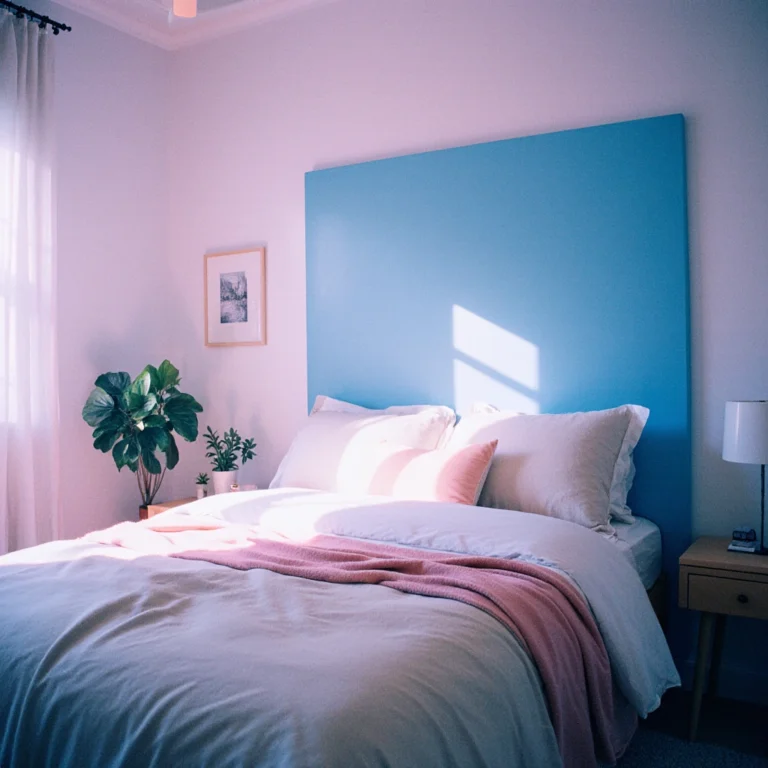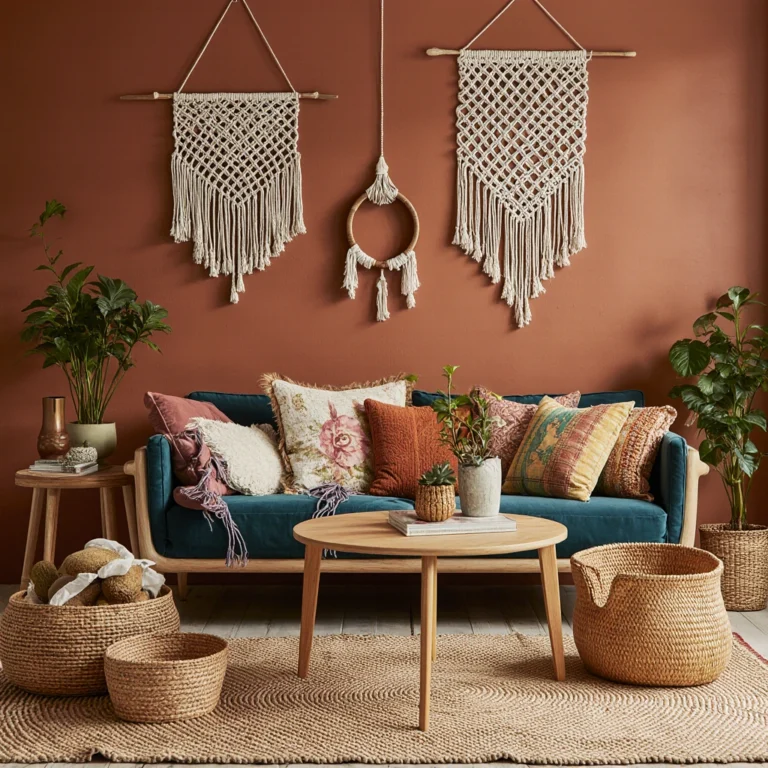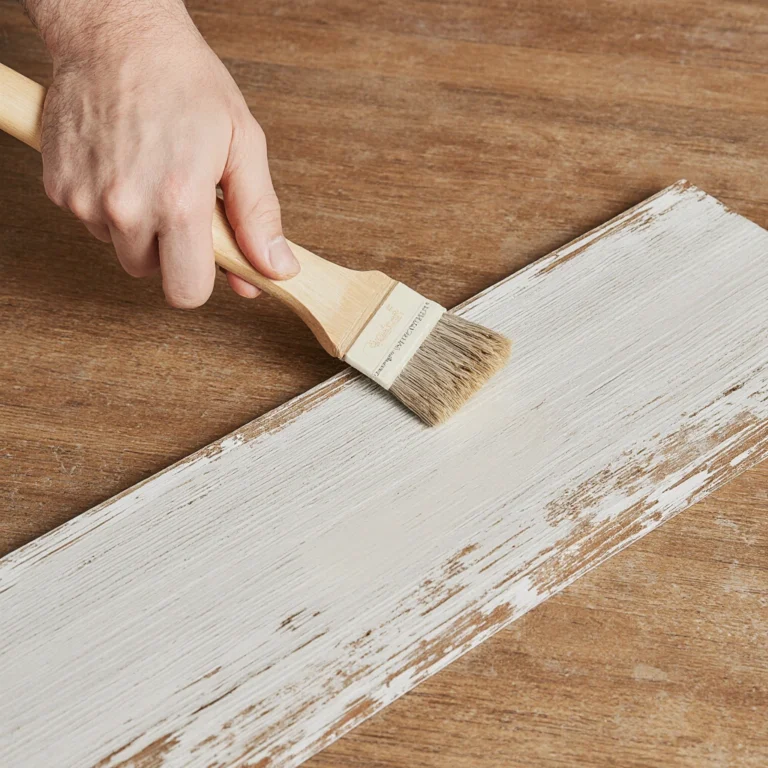The Complete Guide to Green Wall Paint Colors for Your Home
Table of Contents
Green wall paint colors have become a game-changer in modern interior design, transforming ordinary spaces into vibrant, tranquil havens that reflect the timeless beauty of nature. Whether you want to create a calming retreat in your bedroom, a refreshing workspace in your kitchen, or a sophisticated living room, choosing the right shade of green can significantly enhance your home’s aesthetic and emotional well-being.
This comprehensive guide will walk you through everything you need to know about choosing, applying, and maintaining green paint colors in your home. From understanding different paint types to exploring the latest trends for 2025, we’ll cover practical tips, cost-saving strategies, and expert insights to help you make informed decisions for your next painting project.
Paint Types
Understanding paint types is crucial when choosing green wall paint colors, as paint significantly impacts the color’s appearance and performance in different lighting conditions and room environments.
Matte Finish
Matte finishes create an elegant, velvety appearance that highlights the beauty of dark greens and grays. This finish absorbs light rather than reflecting it, creating a rich, uniform color depth. However, matte paints can be difficult to clean and show signs of wear more easily, making them ideal for lightly used areas such as bedrooms and formal dining rooms.
Eggshell Finish
Eggshell finishes create a subtle sheen that highlights the natural beauty of mint greens and eucalyptus tones. This versatile finish is more durable than matte, while maintaining a soft, elegant appearance. It’s ideal for living rooms and bedrooms where you want easy washability without excessive shine.
Satin Finish
Satin finishes work exceptionally well with medium-toned greens, such as olive and moss. This subtle sheen reflects light beautifully, making rooms appear larger and brighter. Satin paint is highly durable and easy to clean, making it ideal for hallways, kitchens, and children’s rooms.
Semi-gloss and glossy finishes
These high-gloss finishes are ideal for vibrant emerald greens and bold lemon shades in bathrooms, kitchens, and interior finishes. The reflective surface creates a more intense appearance while providing maximum durability and moisture resistance. However, these finishes can highlight wall imperfections, so proper surface preparation is crucial.
Best Paint Colors for Every Room
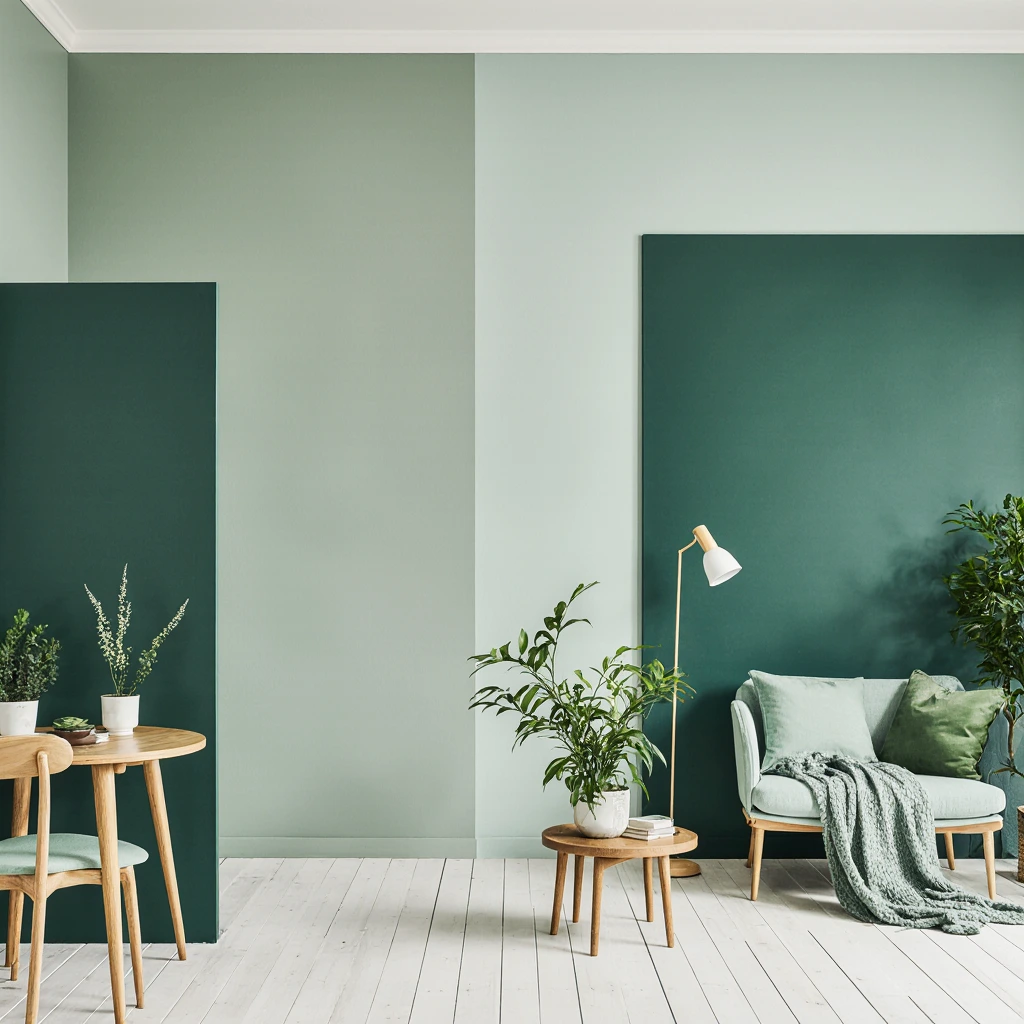
Choosing the right shade of green for each room requires an understanding of how color psychology affects mood and function in different spaces.
Green Bedroom Paint Ideas
Sage green and soft mint are ideal for sleep, promoting relaxation and tranquility. These calming colors reduce stress and anxiety while maintaining a sense of freshness and vitality. Consider coordinating sage-colored walls with white finishes and natural wood accents for a spa-like feel. Deeper greens, such as hunter green or forest green, work well on feature walls behind headboards, creating a warm and relaxing environment.
Kitchen Color Schemes
Olive green and moss shades add warmth and sophistication to kitchen spaces and complement both traditional and modern design styles. These earthy greens pair beautifully with white cabinetry, stainless steel appliances, and natural stone countertops. For a bold statement, consider using emerald green on an island or feature wall, pairing it with neutral tones throughout the space.
Bathroom Paint Choices
Spa-inspired greens, such as eucalyptus and seafoam, create a fresh and clean atmosphere in bathrooms. These colors evoke feelings of cleanliness and renewal while maintaining a sleek appearance. Due to high humidity levels, it’s always advisable to choose high-quality, moisture-resistant paints with semi-gloss or satin finishes to ensure optimal durability.
Living Room Design
Versatile greens, such as celadon and jade, create a stunning effect in living spaces, providing a sophisticated backdrop for various decor styles. These colors create a welcoming environment for entertaining while still remaining calm enough for daily relaxation. When choosing color shades, consider the room’s exposure to natural light—north-facing rooms benefit from warm green tones, while south-facing spaces are best suited to cooler shades.
Paint Color Combinations and Styles
Creating harmonious color schemes using green wall paint requires an understanding of complementary colors and current design trends.
Neutral Green Color Combinations
Combining soft greens with warm whites, creams, and beiges creates timeless, elegant spaces that never go out of style. These combinations suit both traditional and transitional design styles, offering a fresh alternative to standard neutral color palettes while maintaining broad appeal.
Bold Contemporary Designs
Combining deep emerald or forest green with deep navy, charcoal gray, or even black adds a touch of elegance and sophistication to chic interiors. These bold combinations are ideal for contemporary homes and can be paired with metallic gold or copper accents for a touch of luxury.
Top Color Combinations for 2025
Current trends lean toward eco-friendly design elements, with green walls complementing natural materials like rattan, jute, and reclaimed wood. Popular combinations include sage green with warm terracotta accents, mint green with soft coral accents, and olive green with rich burgundy, creating a sophisticated autumnal color palette.
Seasonal Adaptation Strategies
Spring color palettes focus on fresh, light greens with soft yellows and whites. Summer designs combine mint and cool seafoam shades with blue accents. Fall color schemes feature dark olive and moss greens with warm orange and brown tones, while winter color palettes use deep greens with deep red and gold accents.
DIY Painting Tips
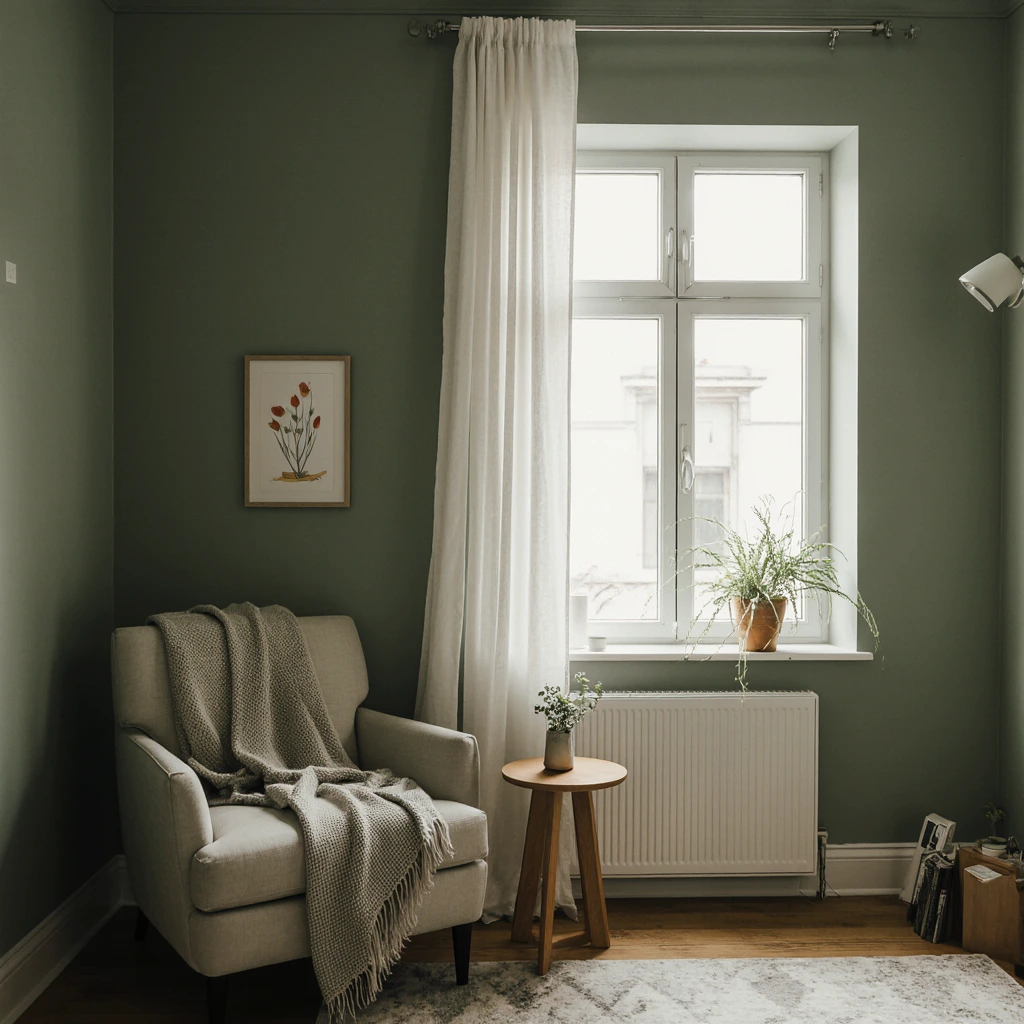
Successfully applying green wall paint colors requires good preparation, high-quality tools, and proven techniques.
Essential Tools and Materials
Invest in high-quality paint brushes and rollers specifically designed for the type of paint you choose. Premium synthetic brushes work best with latex paints, while natural-bristled brushes are ideal for oil-based textures. Use 3/8-inch rollers for smooth walls and 1/2-inch rollers for textured surfaces.
Surface Preparation Steps
Proper preparation ensures the best color results and longevity. Clean walls thoroughly with a mild cleaner, fill holes and cracks with a filler compound, and sand until smooth after drying. Prime bare drywall, stained areas, or when making drastic color changes. This step is especially important when transitioning from dark to light colors or vice versa.
Professional Application Techniques
Apply paint in thin, even coats rather than attempting to achieve full coverage at once. Use a “W” pattern when painting walls, keeping a wet edge to avoid overlapping marks. For trim work, use long, steady brush strokes, then use a backing brush to remove brush marks. Allow sufficient drying time between coats; rushing the process often results in poor adhesion and uneven coverage.
Common Application Mistakes
Avoid overusing brushes and rollers, as this can cause paint drips and uneven coverage. Do not paint in direct sunlight or high temperatures, as this can cause the paint to dry too quickly and result in visible imperfections. Always remove painter’s tape while the paint is still slightly damp for clean, clear lines.
Detailed Budget Tips
Understanding your paint costs helps you budget effectively for your project and identify savings opportunities.
Room-by-Room Cost Estimates
A typical bedroom (12 x 12 feet) requires approximately 2-3 gallons of paint, costing between $60 and $150 for a high-quality paint. Kitchen projects often cost between $100 and $250, depending on the cost of painting the cabinets. Painting a bathroom typically costs between $50 and $120 due to the small size of the space, but may require high-quality, moisture-resistant paint.
Money-Saving Strategies
Buy paint during sales periods, especially during the spring and fall when retailers offer significant discounts. Consider paint with defects or returned from home improvement stores—these “fault” paints often offer excellent value for projects where color coordination isn’t critical. Buy paint and supplies in bulk for projects involving multiple rooms to take advantage of bulk discounts.
Eco-Friendly Options
Low- or no-VOC paints are becoming more affordable, while providing better indoor air quality. These formulations often require fewer coats due to improved coverage, which can offset the higher initial costs. Consider milk paint or clay paint options for unique, eco-friendly finishes that are budget-friendly.
Long-Term Value Considerations
Investing in a premium paint may be more expensive initially, but it often offers better coverage, durability, and color retention, reducing the need for frequent repainting. Consider the actual cost per year of use rather than just the initial cost when making paint quality decisions.
Paint Trends and Inspiration
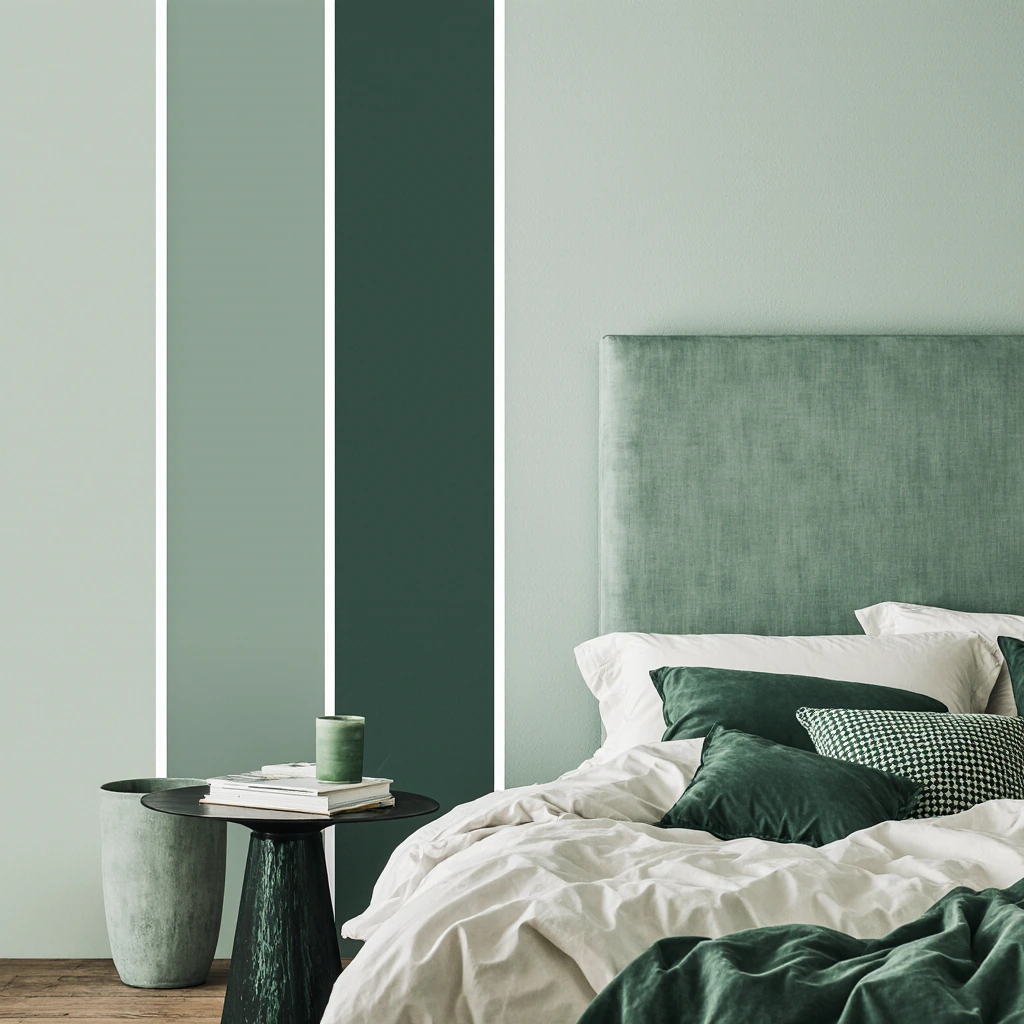
Keeping up with the latest color trends ensures your green wall paint choices remain stylish and contemporary.
Design Movement 2025
This wellness-focused design trend focuses on vital elements, and green paint colors are at the forefront of this trend. Sage Green was ranked the top color by major paint manufacturers, reflecting consumers’ desire for calming, nature-inspired spaces. Design concepts focused on digital detox favor calming, organic greens that promote relaxation and mental well-being.
Influencer and Designer Insights
Leading interior designers are increasingly incorporating various shades of green into individual spaces, adding depth and visual interest through color variations. This monochromatic approach allows for sophisticated color play while maintaining harmony throughout the room.
Global Color Influences
European design trends favor cooler, more subdued shades of green, while American preferences lean toward warmer, more saturated shades. Understanding these regional preferences can help you choose colors based on your personal preferences and local resale market considerations.
Social Media Color Trends
Platform-driven trends show a rise in the popularity of “millennial”-style greens, sophisticated and traditional shades that appeal to younger consumers seeking timeless elegance. Sage green, in particular, has gained widespread popularity across social media platforms, inspiring countless room makeovers and DIY projects.
Common House Painting Mistakes
Avoiding these common mistakes ensures professional results for your green wall painting project.
Color Selection Mistakes
The most common mistake is choosing paint colors based solely on small swatches or digital photos. Paint colors can vary significantly in different lighting conditions and room sizes. Always test large patches in multiple areas of the room and observe them at different times of the day before making final decisions.
Inadequate Surface Preparation
Ignoring or rushing the preparation steps often results in poor paint adhesion, visible defects, and shortened paint lifespan. Improper application of primer, especially when painting over dark colors or stained surfaces, can result in faded and uneven coverage once the paint dries.
Environmental Factors
Painting in unfavorable weather conditions—such as high humidity, high temperatures, or poor ventilation—can cause the paint to not dry properly, leading to problems such as poor adhesion, prolonged drying times, or visible defects. Always follow the manufacturer’s recommendations for optimal application conditions.
Technology and Tool Mistakes
Using poor-quality tools often results in streaks and uneven coverage, negatively impacting the quality of even the highest-quality paint. Overusing a brush or roller can also create visible texture issues and negatively impact the final appearance.
How to Maintain Painted Walls
Regular maintenance prolongs the life of your green wall paint and preserves its beauty while protecting your investment.
Regular Cleaning Protocols
Clean walls monthly using a microfiber cloth or a soft brush attachment on your vacuum. For a deeper clean, use a cloth slightly dampened with a mild soap solution, working from the bottom up to prevent streaks. Avoid harsh chemicals or abrasive cleaners that can damage the wall paint.
Touch-Up Strategies
Save leftover paint for future touch-ups. Before touch-ups, clean the area thoroughly and allow it to dry completely. Apply thin coats using a brush or small roller, trimming the edges to blend in with the surrounding paint. For best results, arrange entire sections of the wall instead of small patches whenever possible.
Prevent Premature Wear
Use furniture pads to prevent scratches on chairs and tables. Install chair rails or wood wall panels in high-traffic areas to protect walls from damage. Address moisture problems promptly to prevent paint damage, especially in bathrooms and kitchens where humidity levels fluctuate.
Professional Maintenance Services
Consider professional cleaning of precious or heavily painted areas. Some painting contractors offer maintenance services that extend the life of your home’s paint while maintaining warranty coverage.
Conclusion
Green wall paint colors offer endless possibilities for creating beautiful, personalized spaces that reflect your style while promoting well-being and a connection with nature. By understanding the intricacies of different paint finishes to mastering application techniques and maintenance strategies, this comprehensive guide provides the knowledge needed to transform your home successfully and with confidence.
Remember, successful painting projects require careful planning, high-quality materials, and attention to detail. Whether you’re creating a serene sage-colored bedroom or a bold emerald accent wall, taking the time to properly prepare and execute your project will ensure results you’ll love for years to come.
Try these paint ideas in your next home renovation and let us know how you did in the comments. Sign up for more home decor guides and expert advice to help you create your dream home!
Best Amazon Picks :
FAQs
What is the best green paint for bathrooms?
Sea green and eucalyptus shades create a wonderful atmosphere in bathrooms, creating a spa-like atmosphere while maintaining a variety of fixture colors. Always choose moisture-resistant paints with a satin or semi-gloss finish to ensure optimal durability in high-humidity environments.
How long should green paint dry before applying another coat?
Most high-quality latex paints require two to four hours between coats, but drying time varies depending on humidity, temperature, and ventilation. Always follow the manufacturer’s recommendations and ensure the first coat is completely dry before applying additional coats to prevent peeling or uneven color.
How do I choose a shade of green that matches my existing furniture?
Bring fabric swatches or photos of your furniture when choosing paint colors. Pay close attention to base colors – warm wood furniture pairs well with yellow-based greens, such as sage or olive, while cool furniture pairs well with blue-based greens, such as mint or navy.
Can I paint dark walls green without a primer?
When transitioning from dark to light green, a primer is essential for perfect coverage and color accuracy. Dark wall colors can bleed through lighter paint colors, resulting in washed-out or uneven results. A high-quality primer ensures accurate color rendering and reduces the number of top coats needed.
What green paint colors make small rooms look bigger?
Light, cool greens, such as mint, sage, and pale navy, reflect more light and create a sense of spaciousness. Coordinate these colors with white trim and ceiling paint to maximize the room’s expansion. Avoid dark or warm greens in small spaces, as they can make rooms appear cramped.

